D
Dave Coster
Guest
PERFECT MIX
I mentioned a few weeks ago that I would take a proper look at punched bread fishing, a method I have rediscovered over the long winter just past. My reasons for taking the bread route were due to local venues fishing rock-hard. Standard baits like maggots and casters were only pulling bites late on in sessions, mainly during the last hours of daylight. Heavy frosts had knocked a lot of colour out of waters, leading me to conclude if anything was likely to stir some action it was bread. I hadn’t seriously used this bait for many years, so the first thing to sort out was groundbait. Back in my early punch fishing days, liquidized bread was all the rage. Not having a food blender, or any bread old enough to mulch up, wasn’t a problem. I found there are still plenty of punch crumb groundbaits around, but after experimentally mixing a few up, something was missing. I fixed this by adding a handful of Swim Stim F1 Sweet, which pumped a much nicer aroma into the feed.
ON THE MENU
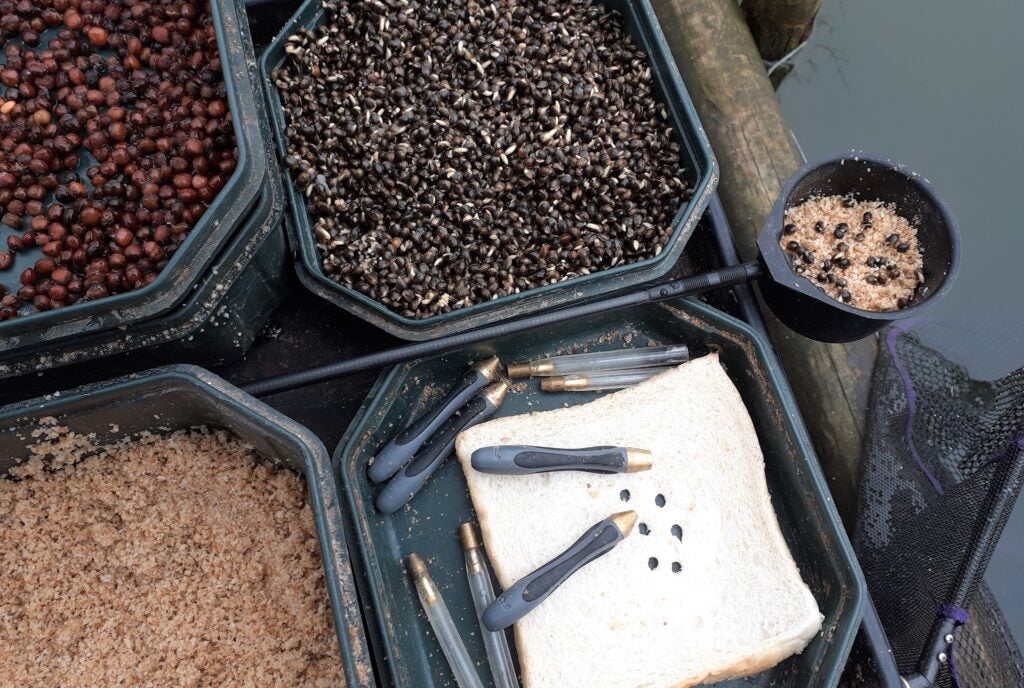
Despite it being winter, I remembered that hemp and tares combine particularly well with bread punch. I know a lot of anglers only use seed baits in summer and autumn, and I have been just as guilty, but something made me dig some out of the freezer. I’m glad I did. I recalled anglers catching on hemp in winter when I used to fish big league matches on drains and rivers. I think the secret to hemp and tares working in the cold is all about the venue holding a high density of fish. If it’s a bite a chuck sort of place, chances are baits like this will work, but mainly after swims have been built up with bread. If punch isn’t working and the going is tough, hemp and tares are far less likely to pull a response. I carry a good selection of bread punches. Having plenty of size options allows moving up or down a gauge, which can make a big difference to the number of positive bites you get, also the size of fish. Some of my punches are pretty ancient but they still work perfectly.
WHERE TO GO
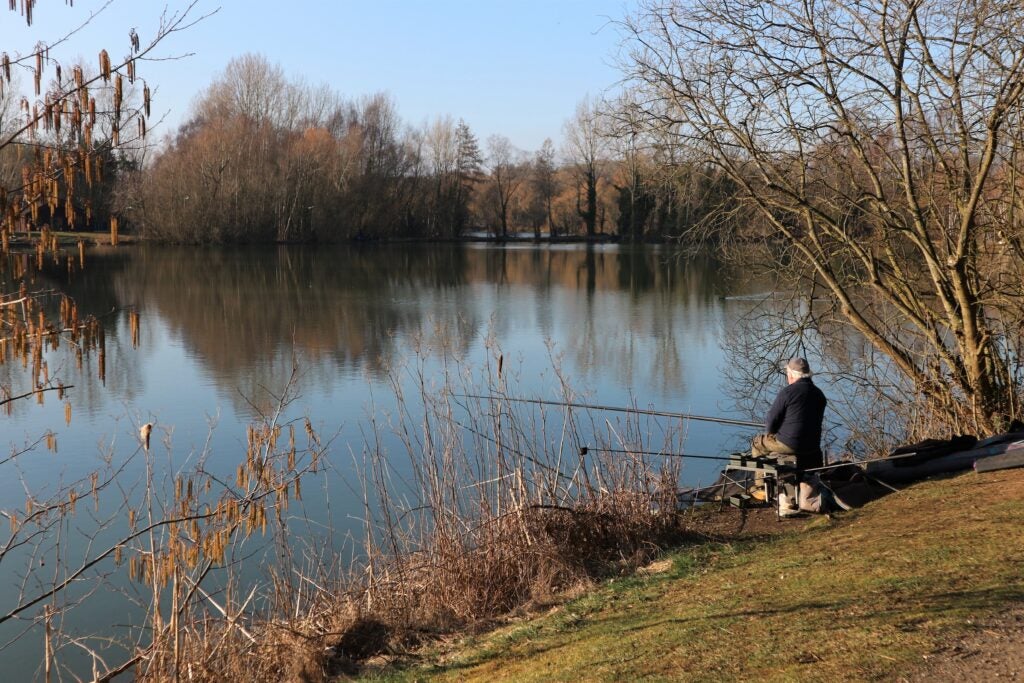
I thought about trying punch on my local Grantham Canal, but that can be tough going, even in much fairer conditions. I reasoned my best option would be to explore well-stocked lakes in the area, especially while the cold had made the carp less active. I had plenty to choose from, and it would be interesting to discover what else some of these places held – apart from the usual suspects. Due to the type of baits and heavy tackle being used on these types of waters, I suspect many hold hidden stocks of untapped silver fish. On my first trip, I cupped in some of my new groundbait mix, trying a 5mm compressed pellet of bread on a size 18 hook. To my amazement the float shot under straight away, and a plump roach resulted. Next cast the same again, and so it went on. I upped the punch size and the fish started to get bigger. This quick frenzy of sport was amazing, considering most places were stone dead in the arctic winds and continuous heavy overnight frosts.
SPREAD BULKS
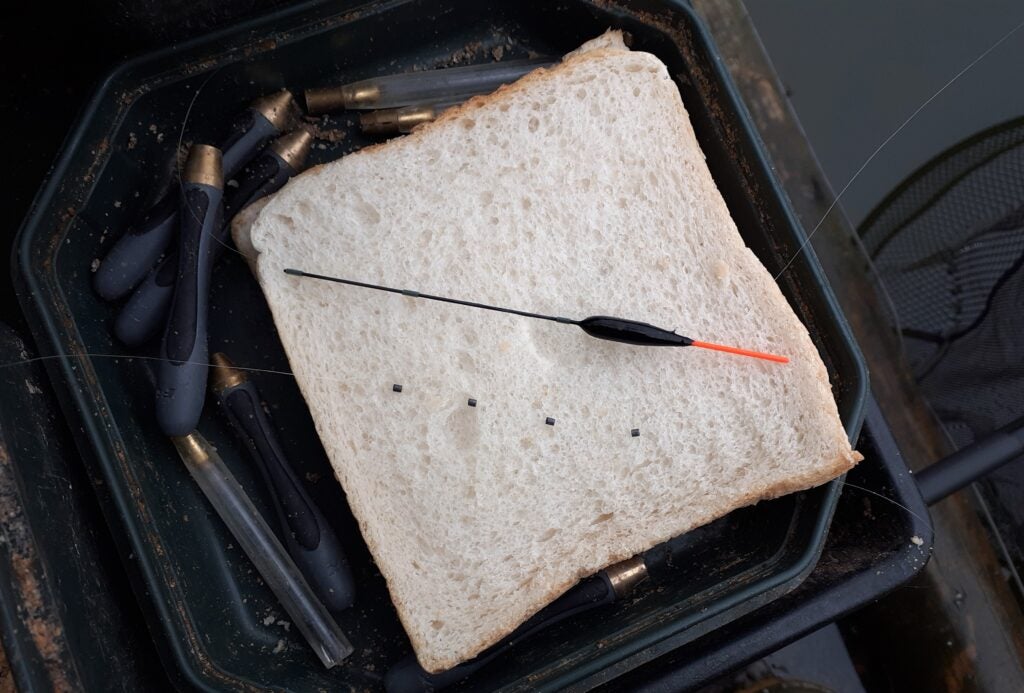
I’ve mentioned before that slightly spread bulks of size 8 or 9 shot work wonders on pole rigs. They help the tackle to settle in a more natural manner, pulling extra interest on the drop. This set-up needs to be combined with 3 smaller micro shot, or Stotz weights, spaced further apart down to the hook. I aim to use 4 or 5 bigger Stotz weights to form the main bulk on shallow venues, and then 3 number 11s or 12s below. This allows rigs to be laid in and held on a tight line, so the float slowly cocks upright, which often pulls bites as the hook bait settles. In this case it was to be punched bread, with a positive 1.5mm hollow tip float. On a canal or drain, I would probably use a finer and more sensitive fibre-tipped float, with a streamlined body. On natural venues, I would opt for 0.08mm trace line and a fine wire hook. But on lakes stocked with lots of carp, I tend to step up to 0.10mm mono and slightly stronger, barbless, medium-wire hooks.
TURNING TO SEED
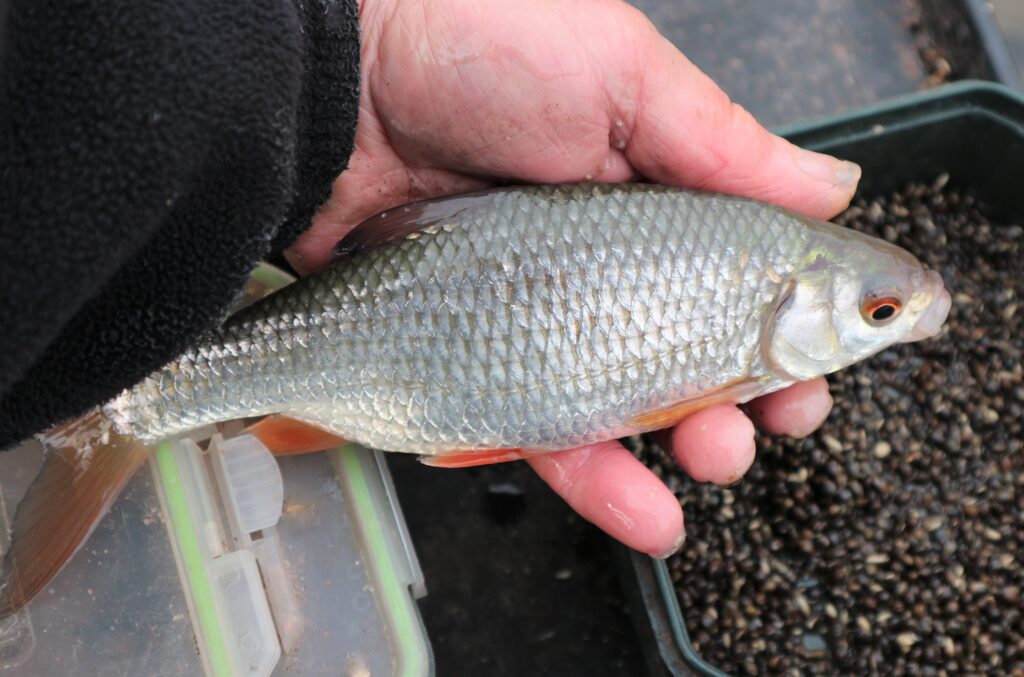
After that quick flurry of action, I got pestered with small fish. I found it best to cup in a good handful of groundbait every 30 minutes to keep the bites coming, doing this in loose form because my swim was quite shallow. I had fed a bit of hemp from the off and was now dinking in small amounts with a catapult every put in, so I tried a grain on the hook. It took a while to get an indication, before my float sailed away and a pristine net roach resulted. It always amazes me how you can catch perfect-looking silvers on heavily-fished venues like this. I can only assume they don’t normally get caught, due to most anglers using strong carp-orientated gear. The carp didn’t have much to fear currently; it was bitterly cold and hardly any other anglers were about. Plenty of bites kept coming on hemp, resulting in a nice stamp of roach. Switching back to punch, during quiet periods, proved the skimmers preferred bread. Tares were a lot slower but did catch odd fish.
FAITHFUL COMBINATION
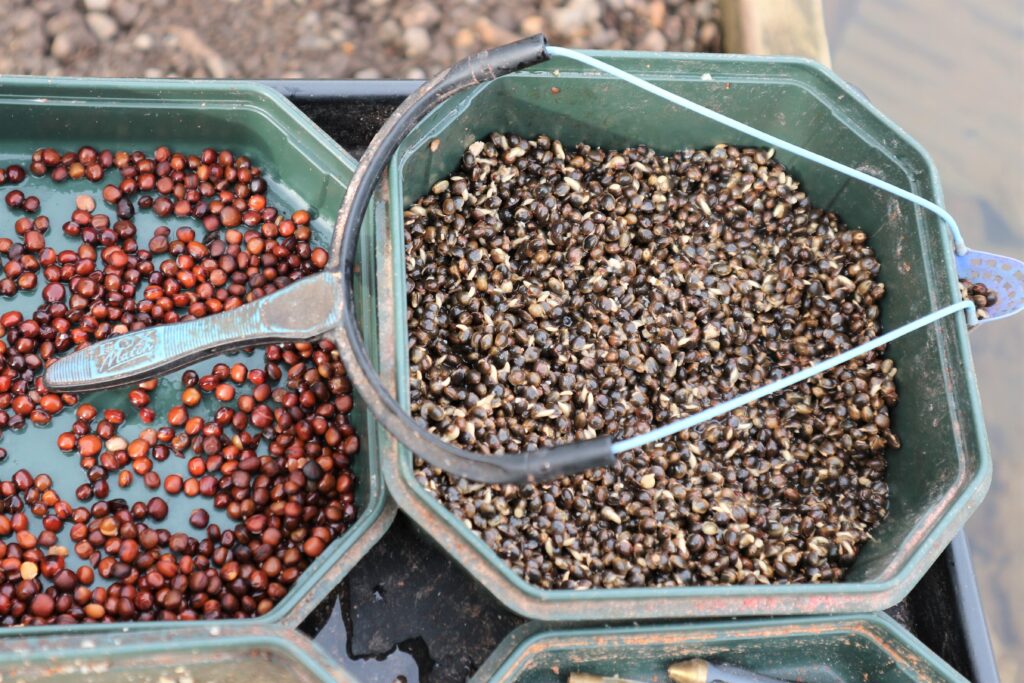
You don’t see much about hemp and tare fishing on the media these days. Everything seems to be pellet-orientated, which is strange because these seed baits can still be very effective. I caught well using them on the River Trent last summer and here I was, getting bites in the middle of winter on an ice-fringed lake. I don’t bother cooking up my own hemp these days, finding a lot of raw stuff is tricky to prepare, not always opening up so the shoots emerge properly. I much prefer pre-cooked tinned products, finding the small tins of Dynamite Natural Frenzied or large tins of Bait-Tech Super Seed best. What I like most about tinned hemp is the shells are often quite soft, making them easy to pierce with a sharp baiting needle or knot picker. This trick is handy if you want to try and catch several fish on one bait, hooking through the shell. But most of the time I prefer to use tares because they are much easier to attach, simply nicking the hook through the soft skin.
POSITIVE START
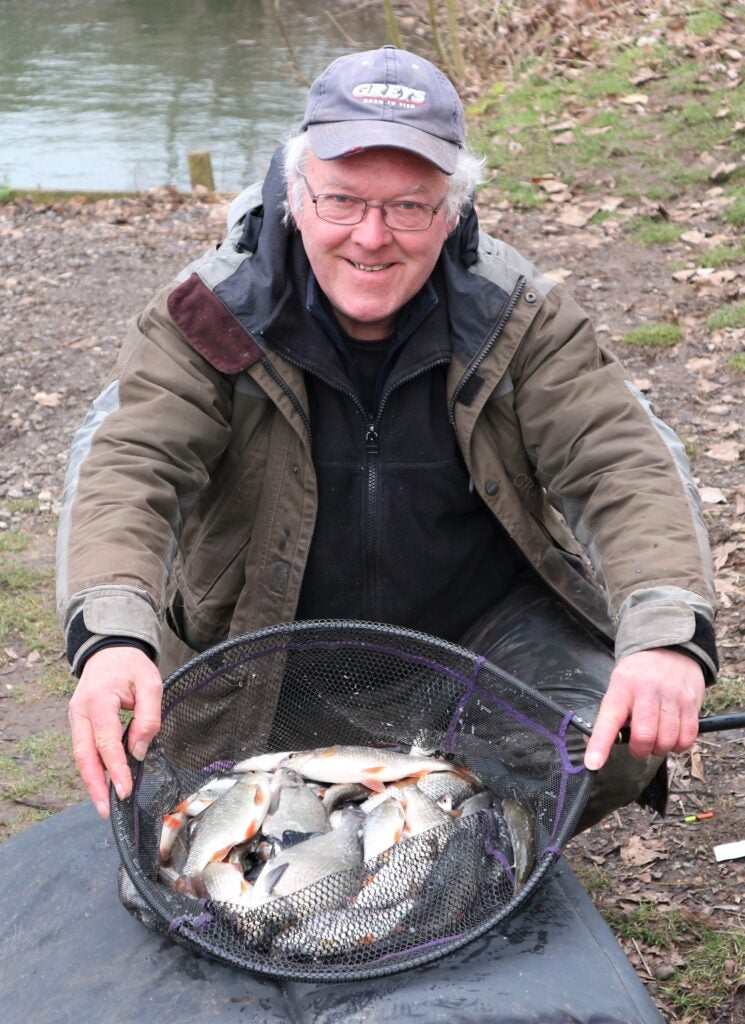
My first proper punch session in a long time resulted in mainly 3-10oz roach, plus a few bonus skimmers. Quite a few roach were taken on hemp and tares, having to wait a bit longer for bites than when using punch. I caught the skimmers on 4mm pellets of compressed bread, which swell up to around 6mm when submerged. A few skimmers were pushing close to the pound mark and altogether I guessed I had caught close to double figures. Considering other anglers on nearby lakes were struggling for bites, I was more than happy with that, on a day when temperatures didn’t go much above freezing. I certainly believe I would have caught a lot less on maggots or casters, even less again on pellets. While packing up, I was already planning on taking this punch fishing to the next level, targeting better-sized skimmers on another lake. That venue had a lot more carp in it, so it would be interesting to see if I could string a net of silvers together again.
STEPPING UP
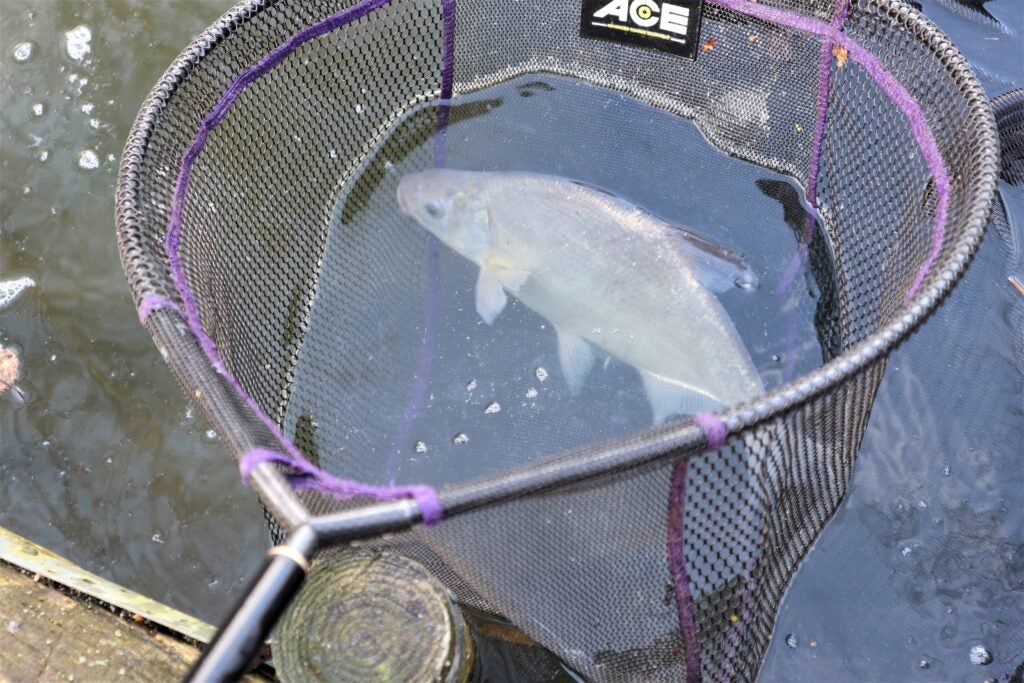
The cold snap seemed to go on forever. On arriving on lake number two, I found the water clarity even clearer, and because this was a very shallow venue, I wasn’t that confident. I left hemp out of the proceedings to begin with, simply cupping in loose crumb every 20 minutes. Not a touch for nearly two hours. I was just beginning to think I was wasting my time when the float went under. I was using the same pole rig from my previous session, minus a few inches trimmed off it, to retain decent presentation due to having less depth. A ponderous fish, with a bit of weight behind it, pulled out a fair bit of elastic from the end of my long pole. It thumped hard and could only be a decent-sized skimmer. Finally, something had found my bed of crumb feed and this was a great start, a fish around the pound mark. I missed the next couple of half-bites, when the float only dithered around. I tried going a bit further over-depth and the float buried straight away.
WORTH THE WAIT
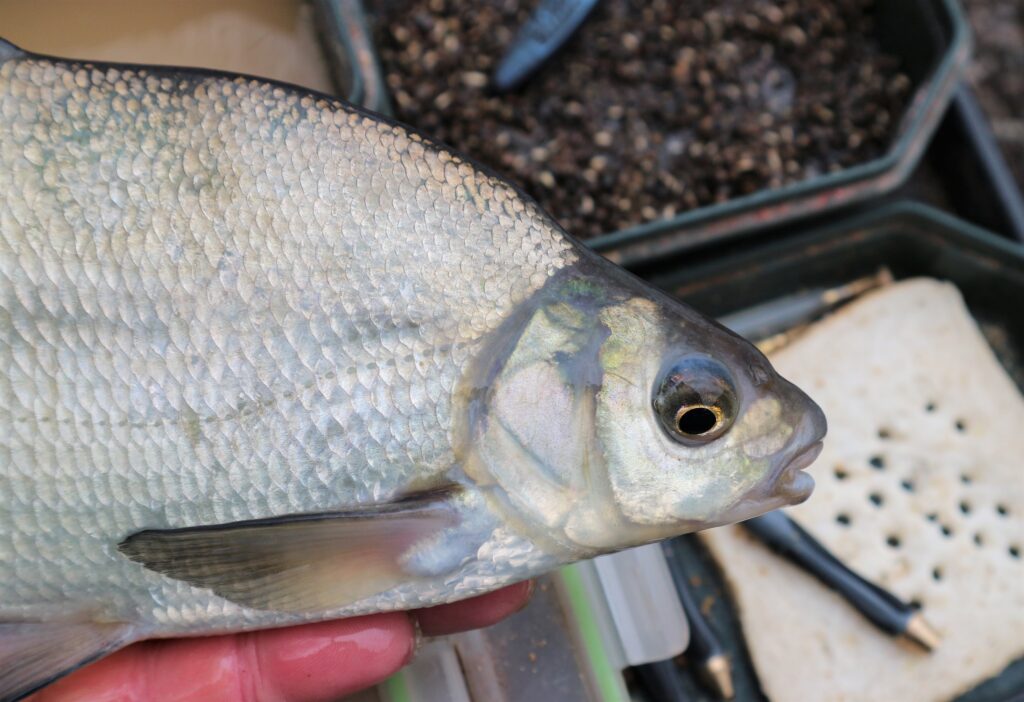
The next skimmer was bigger and surged off like a rocket in the shallow water, but I was using hybrid elastic, which took the strain okay with my relatively light tackle. I kept regular crumb feed going in and the bites continued. A pattern was emerging where small fish activity was followed by quiet spells, followed by more positive bites and decent skimmers. A few roach and small hybrids turned up, so I tried loose feeding hemp again, only this time it only resulted in a solitary net roach. A decent size pellet of punched bread was what the fish wanted this time. It was mainly baby bream, along with a few larger ones that were beginning to show signs of turning into proper bronze versions. Just as an experiment, I tried red maggots instead of bread and only caught tiny roach on them. A segment of worm was ignored completely, so it looked like the white stuff really was making all the difference. Once again, other anglers on adjacent lakes were struggling.
AN INTRUDER CALLS
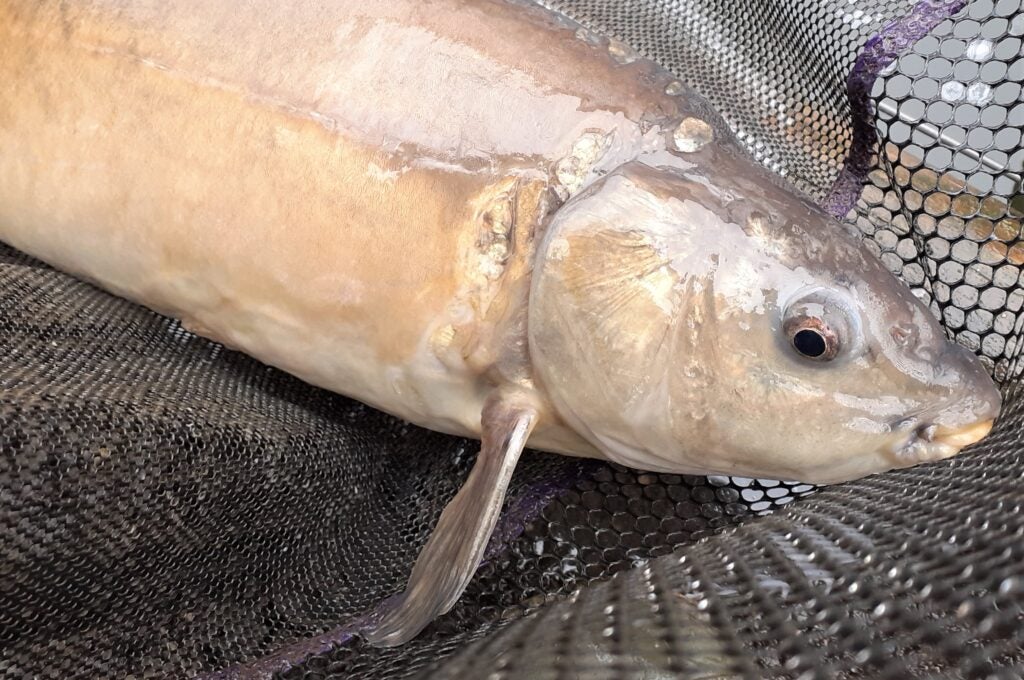
I suppose it had to happen. My swim suddenly went dead, followed by a lightening fast bite, and then yards of pole elastic streamed out across the lake. A carp had obviously butted in on my bread attack. Even though I was on light pole tackle, the new type of solid hybrid elastic I now use amazes me how well it stretches. I’ve had to fit mini puller bung systems on my lighter top kits, otherwise it would take forever to get back some control when lumpy carp get attached to silver fish rigs. This one was soon tamed but really muddied up my swim, requiring a top up with more crumb feed, before yet another carp gave me the run around. I told another angler, who was fishing down the other end of the lake, about how well punch was working. He tried it on waggler tackle and caught half a dozen carp, the best one a double-figure fish. He had been struggling on maggots and pellets. It seemed bread was capable of waking up just about everything.
GETTING BETTER
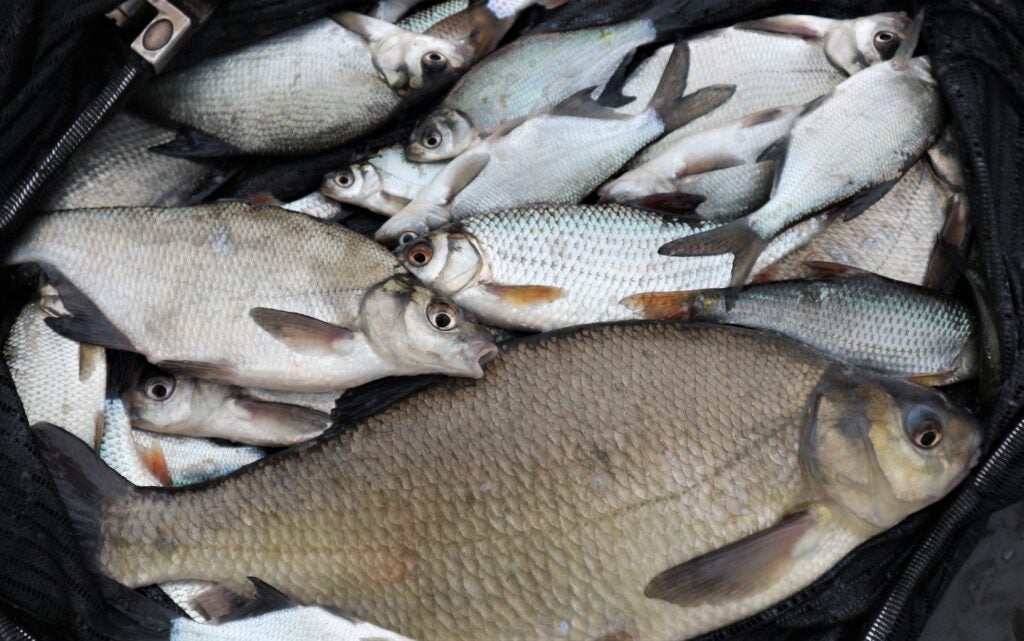
My second punch session was even better, especially when a surprise slab bumped my catch well into double figures. There were a lot more skimmers this time, with fewer roach, although the ones I did catch were generally of a good stamp. I suspected I would have caught more quality fish if the sun hadn’t come out during the second half of the session. This kills the action on many lakes in winter, while the water’s on the clear side. Another thing I needed to bear in mind was I had fished very carefully, and maybe next time should try being a bit bolder with the amount of crumb I feed. I had only cupped in just over a pint and a half of groundbait, trying small amounts of hemp over the top for a short time. Something else that was very noticeable was the way the size of punch influenced bites. When the skimmers were really having a go, larger pellets of bread worked best, but smaller discs were required to gain bites when the going got tough.
NAILING IT
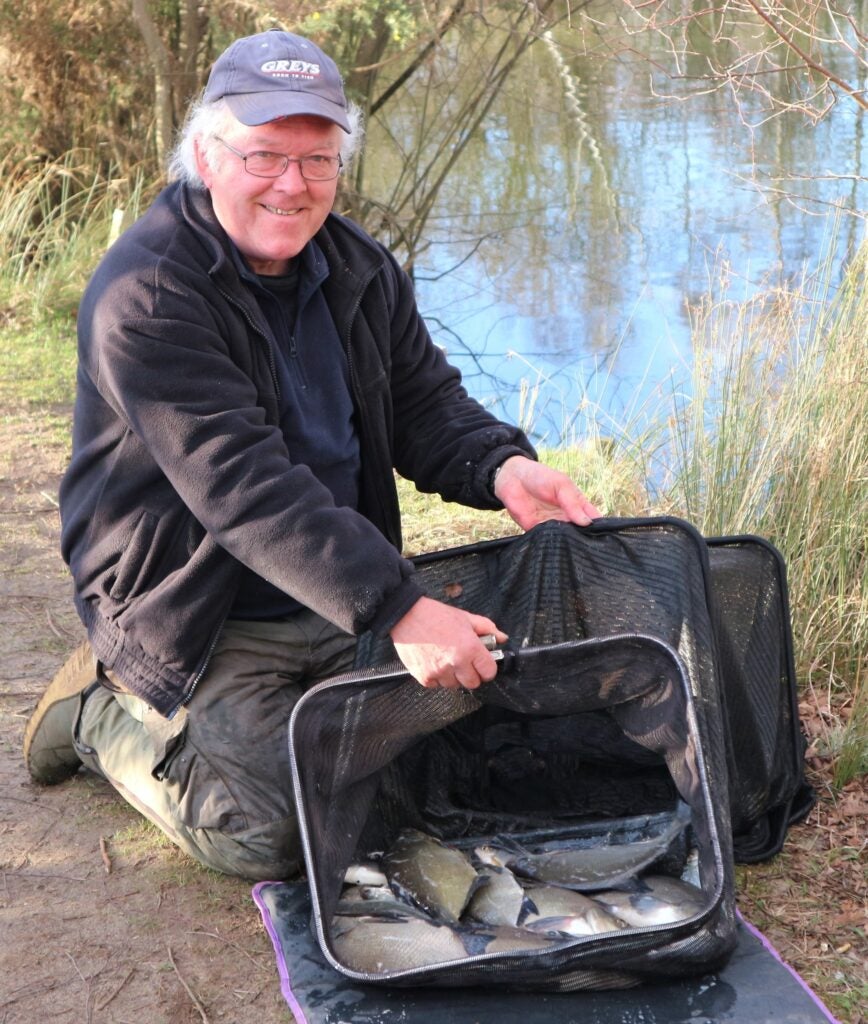
After getting back into the swing of bread punch fishing, I returned to the same lake where the skimmers had dominated, only this time it was forecast to be dull and cold all day. It would prove to be perfect conditions for attacking more heavily. I had mixed a bigger percentage of coarse crumb into my groundbait, in the form of Sonu Baits’ Toasty Brown mix. I again added some of that Sweet F1 yellow gear from Dynamite, along with a big handful of cloudy white Sensas Punch Crumb. Bearing in mind it had taken a long time to get any indications last trip, I cupped in groundbait a lot more regularly to begin with. Instead of waiting two hours, it only took 30 minutes to get bites by keeping the swim well clouded up. I also used a bigger punch size from the start, fishing a bit more over-depth. Everything worked better, with a much bigger stamp of skimmers resulting. It was still tough just about everywhere, but not for me with my three slices of white bread!
The post Punched Bread first appeared on FishingMagic Magazine.
Continue reading...
I mentioned a few weeks ago that I would take a proper look at punched bread fishing, a method I have rediscovered over the long winter just past. My reasons for taking the bread route were due to local venues fishing rock-hard. Standard baits like maggots and casters were only pulling bites late on in sessions, mainly during the last hours of daylight. Heavy frosts had knocked a lot of colour out of waters, leading me to conclude if anything was likely to stir some action it was bread. I hadn’t seriously used this bait for many years, so the first thing to sort out was groundbait. Back in my early punch fishing days, liquidized bread was all the rage. Not having a food blender, or any bread old enough to mulch up, wasn’t a problem. I found there are still plenty of punch crumb groundbaits around, but after experimentally mixing a few up, something was missing. I fixed this by adding a handful of Swim Stim F1 Sweet, which pumped a much nicer aroma into the feed.
ON THE MENU

Despite it being winter, I remembered that hemp and tares combine particularly well with bread punch. I know a lot of anglers only use seed baits in summer and autumn, and I have been just as guilty, but something made me dig some out of the freezer. I’m glad I did. I recalled anglers catching on hemp in winter when I used to fish big league matches on drains and rivers. I think the secret to hemp and tares working in the cold is all about the venue holding a high density of fish. If it’s a bite a chuck sort of place, chances are baits like this will work, but mainly after swims have been built up with bread. If punch isn’t working and the going is tough, hemp and tares are far less likely to pull a response. I carry a good selection of bread punches. Having plenty of size options allows moving up or down a gauge, which can make a big difference to the number of positive bites you get, also the size of fish. Some of my punches are pretty ancient but they still work perfectly.
WHERE TO GO

I thought about trying punch on my local Grantham Canal, but that can be tough going, even in much fairer conditions. I reasoned my best option would be to explore well-stocked lakes in the area, especially while the cold had made the carp less active. I had plenty to choose from, and it would be interesting to discover what else some of these places held – apart from the usual suspects. Due to the type of baits and heavy tackle being used on these types of waters, I suspect many hold hidden stocks of untapped silver fish. On my first trip, I cupped in some of my new groundbait mix, trying a 5mm compressed pellet of bread on a size 18 hook. To my amazement the float shot under straight away, and a plump roach resulted. Next cast the same again, and so it went on. I upped the punch size and the fish started to get bigger. This quick frenzy of sport was amazing, considering most places were stone dead in the arctic winds and continuous heavy overnight frosts.
SPREAD BULKS

I’ve mentioned before that slightly spread bulks of size 8 or 9 shot work wonders on pole rigs. They help the tackle to settle in a more natural manner, pulling extra interest on the drop. This set-up needs to be combined with 3 smaller micro shot, or Stotz weights, spaced further apart down to the hook. I aim to use 4 or 5 bigger Stotz weights to form the main bulk on shallow venues, and then 3 number 11s or 12s below. This allows rigs to be laid in and held on a tight line, so the float slowly cocks upright, which often pulls bites as the hook bait settles. In this case it was to be punched bread, with a positive 1.5mm hollow tip float. On a canal or drain, I would probably use a finer and more sensitive fibre-tipped float, with a streamlined body. On natural venues, I would opt for 0.08mm trace line and a fine wire hook. But on lakes stocked with lots of carp, I tend to step up to 0.10mm mono and slightly stronger, barbless, medium-wire hooks.
TURNING TO SEED

After that quick flurry of action, I got pestered with small fish. I found it best to cup in a good handful of groundbait every 30 minutes to keep the bites coming, doing this in loose form because my swim was quite shallow. I had fed a bit of hemp from the off and was now dinking in small amounts with a catapult every put in, so I tried a grain on the hook. It took a while to get an indication, before my float sailed away and a pristine net roach resulted. It always amazes me how you can catch perfect-looking silvers on heavily-fished venues like this. I can only assume they don’t normally get caught, due to most anglers using strong carp-orientated gear. The carp didn’t have much to fear currently; it was bitterly cold and hardly any other anglers were about. Plenty of bites kept coming on hemp, resulting in a nice stamp of roach. Switching back to punch, during quiet periods, proved the skimmers preferred bread. Tares were a lot slower but did catch odd fish.
FAITHFUL COMBINATION

You don’t see much about hemp and tare fishing on the media these days. Everything seems to be pellet-orientated, which is strange because these seed baits can still be very effective. I caught well using them on the River Trent last summer and here I was, getting bites in the middle of winter on an ice-fringed lake. I don’t bother cooking up my own hemp these days, finding a lot of raw stuff is tricky to prepare, not always opening up so the shoots emerge properly. I much prefer pre-cooked tinned products, finding the small tins of Dynamite Natural Frenzied or large tins of Bait-Tech Super Seed best. What I like most about tinned hemp is the shells are often quite soft, making them easy to pierce with a sharp baiting needle or knot picker. This trick is handy if you want to try and catch several fish on one bait, hooking through the shell. But most of the time I prefer to use tares because they are much easier to attach, simply nicking the hook through the soft skin.
POSITIVE START

My first proper punch session in a long time resulted in mainly 3-10oz roach, plus a few bonus skimmers. Quite a few roach were taken on hemp and tares, having to wait a bit longer for bites than when using punch. I caught the skimmers on 4mm pellets of compressed bread, which swell up to around 6mm when submerged. A few skimmers were pushing close to the pound mark and altogether I guessed I had caught close to double figures. Considering other anglers on nearby lakes were struggling for bites, I was more than happy with that, on a day when temperatures didn’t go much above freezing. I certainly believe I would have caught a lot less on maggots or casters, even less again on pellets. While packing up, I was already planning on taking this punch fishing to the next level, targeting better-sized skimmers on another lake. That venue had a lot more carp in it, so it would be interesting to see if I could string a net of silvers together again.
STEPPING UP

The cold snap seemed to go on forever. On arriving on lake number two, I found the water clarity even clearer, and because this was a very shallow venue, I wasn’t that confident. I left hemp out of the proceedings to begin with, simply cupping in loose crumb every 20 minutes. Not a touch for nearly two hours. I was just beginning to think I was wasting my time when the float went under. I was using the same pole rig from my previous session, minus a few inches trimmed off it, to retain decent presentation due to having less depth. A ponderous fish, with a bit of weight behind it, pulled out a fair bit of elastic from the end of my long pole. It thumped hard and could only be a decent-sized skimmer. Finally, something had found my bed of crumb feed and this was a great start, a fish around the pound mark. I missed the next couple of half-bites, when the float only dithered around. I tried going a bit further over-depth and the float buried straight away.
WORTH THE WAIT

The next skimmer was bigger and surged off like a rocket in the shallow water, but I was using hybrid elastic, which took the strain okay with my relatively light tackle. I kept regular crumb feed going in and the bites continued. A pattern was emerging where small fish activity was followed by quiet spells, followed by more positive bites and decent skimmers. A few roach and small hybrids turned up, so I tried loose feeding hemp again, only this time it only resulted in a solitary net roach. A decent size pellet of punched bread was what the fish wanted this time. It was mainly baby bream, along with a few larger ones that were beginning to show signs of turning into proper bronze versions. Just as an experiment, I tried red maggots instead of bread and only caught tiny roach on them. A segment of worm was ignored completely, so it looked like the white stuff really was making all the difference. Once again, other anglers on adjacent lakes were struggling.
AN INTRUDER CALLS

I suppose it had to happen. My swim suddenly went dead, followed by a lightening fast bite, and then yards of pole elastic streamed out across the lake. A carp had obviously butted in on my bread attack. Even though I was on light pole tackle, the new type of solid hybrid elastic I now use amazes me how well it stretches. I’ve had to fit mini puller bung systems on my lighter top kits, otherwise it would take forever to get back some control when lumpy carp get attached to silver fish rigs. This one was soon tamed but really muddied up my swim, requiring a top up with more crumb feed, before yet another carp gave me the run around. I told another angler, who was fishing down the other end of the lake, about how well punch was working. He tried it on waggler tackle and caught half a dozen carp, the best one a double-figure fish. He had been struggling on maggots and pellets. It seemed bread was capable of waking up just about everything.
GETTING BETTER

My second punch session was even better, especially when a surprise slab bumped my catch well into double figures. There were a lot more skimmers this time, with fewer roach, although the ones I did catch were generally of a good stamp. I suspected I would have caught more quality fish if the sun hadn’t come out during the second half of the session. This kills the action on many lakes in winter, while the water’s on the clear side. Another thing I needed to bear in mind was I had fished very carefully, and maybe next time should try being a bit bolder with the amount of crumb I feed. I had only cupped in just over a pint and a half of groundbait, trying small amounts of hemp over the top for a short time. Something else that was very noticeable was the way the size of punch influenced bites. When the skimmers were really having a go, larger pellets of bread worked best, but smaller discs were required to gain bites when the going got tough.
NAILING IT

After getting back into the swing of bread punch fishing, I returned to the same lake where the skimmers had dominated, only this time it was forecast to be dull and cold all day. It would prove to be perfect conditions for attacking more heavily. I had mixed a bigger percentage of coarse crumb into my groundbait, in the form of Sonu Baits’ Toasty Brown mix. I again added some of that Sweet F1 yellow gear from Dynamite, along with a big handful of cloudy white Sensas Punch Crumb. Bearing in mind it had taken a long time to get any indications last trip, I cupped in groundbait a lot more regularly to begin with. Instead of waiting two hours, it only took 30 minutes to get bites by keeping the swim well clouded up. I also used a bigger punch size from the start, fishing a bit more over-depth. Everything worked better, with a much bigger stamp of skimmers resulting. It was still tough just about everywhere, but not for me with my three slices of white bread!
The post Punched Bread first appeared on FishingMagic Magazine.
Continue reading...
